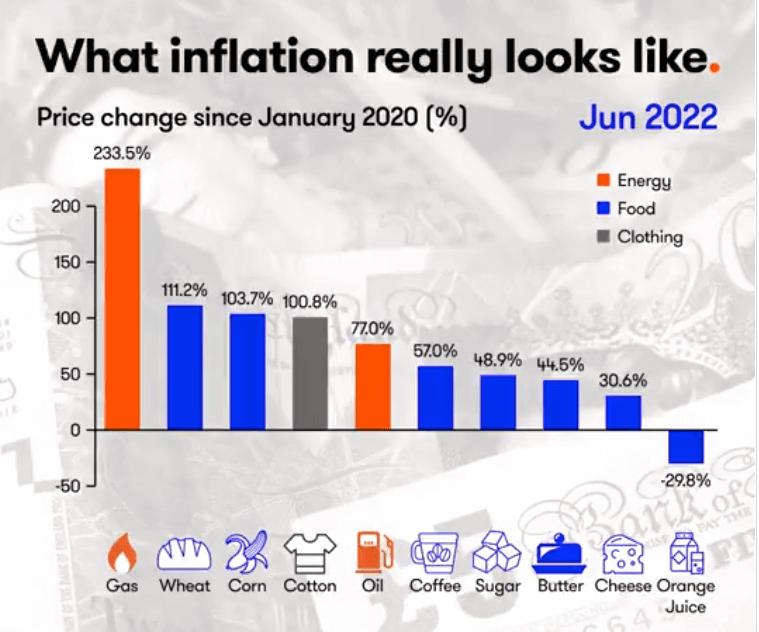Cryptocurrencies are outpacing inflation – but traditional assets are not


The 2020 pandemic has not only brought the world to a standstill, it has brought about the greatest fiscal stimulus in history.
The balance sheets of the US Federal Reserve and the European Central Bank (ECB), two of the world’s largest central banks, have doubled in less than a year. The Federal Reserve’s balance sheet has grown from just over $4 trillion at the end of 2019 to over $8.7 trillion at the end of 2020.
The European Central Bank’s balance sheet has grown from $5 trillion to over $9 trillion in one year. The Bank of Japan, on the other hand, has been more conservative on its balance sheet, adding about $1.5 trillion annually, reaching a total of about $7 trillion by 2021.

Historically unprecedented economic stimulus has left inflation rampant and has yet to peak. Since 2020, the global consumer price index has been steadily rising, with the pace picking up in the second quarter of 2022.
To contain the rising CPI, central banks around the world are racing to raise interest rates and make loans more expensive. Since early 2022, US inflation has risen at such an alarming pace that the Federal Reserve has embarked on the fastest interest rate hike in modern history.

Looking at the single-digit CPI rise in the US fails to show how aggressive inflation really is. Many commodities have seen his triple-digit gains since 2020, with gas prices up more than 233% in his two years. Wheat, corn and cotton prices rose by more than 100% each.

Traditional financial assets have also been incredibly volatile in recent years.
The Nasdaq and S&P 500 managed to post modest growth, roughly in line with inflation over the past year, with the former up 27.6% and the latter up 28%.
Gold had a relatively flat year, growing only 7.23% from 2020.
Long-term US government bonds have fallen more than 39% in value since January 2020, indicating investors have lost confidence in 20+ year bonds.
Meanwhile, the crypto industry and the companies operating within it have not only outpaced inflation, they have shattered almost all traditional assets.
Ethereum and Bitcoin are up almost 496.15% and 107.02% respectively since January 2020.
Shares of Marathon Digital, one of the largest publicly traded Bitcoin miners, rose 302.81%, while Tesla gained nearly 170% over the same period.
Other large cryptocurrencies and crypto-connected companies did as well — Michael Saylor’s Microstrategy was up more than 20% and Silvergate’s stock was up almost 10%.

However, there are also losers in the cryptocurrency industry. The Ark Innovation ETF, the fund that tracks Kathy Wood’s Ark Invest, has fallen more than 40% in two years.
Square, Jack Dorsey’s financial tech firm, posted a loss of 18.32%.
Grayscale Bitcoin trust has lost almost 50% of its value to Bitcoin’s NAV since 2020. Prior to the pandemic, GBTC traded at a 20% premium to the Bitcoin market price.




